- Distance from the capital: 245 km
- Closest glaciers:
Skaftafellsjökull - 70 km
Falljökull - 80 km
Sólheimajökull - 100 km - Number of inhabitants: ~ 200
- Pronunciation: khyr-kyou - bai- yar- klay - stur
Kirkjubæjarklaustur is a small village in South Iceland, half way between the two main attractions on the south coast: the beautiful black sand beach at Vík and the famous Jökulsarlón Glacier Lagoon with its fabulous Diamond Beach.
Iceland’s South East Coast is mainly uninhabited. Apart from a few farms and summer houses, Kirkjubæjarklaustur is the only settlement on the 300 km long stretch of the ring road between Vík and Höfn.
Kirkjubæjarklaustur literally translates as ‘church farm cloister’, but it is usually referred to just as ‘Klaustur’ by the local people, it is easier to remember this way!
What to know about the area
The village is part of the beautiful Katla Geopark and it is the gateway to Iceland’s largest national park, the Vatnajökull National Park.
The surrounding landscapes have a similar volcanic character since the whole area has been shaped by series of volcanic eruptions, the Laki eruption in 1783-1784 was the largest of them all.
Five cubic kilometers of lava flowed to the surface, leaving a 565-square-kilometer lava field in its wake, this lava surrounds Kirkjubæjarklaustur in every direction. Today the lava has long since solidified and it is now covered by a thick, soft layer of fragile moss.
Iceland is extremely rich in different types of mosses since it is the only type of plant which can subsist in these harsh conditions. However, if it is damaged it takes centuries for it to recover, which is why walking on the lava field or stepping onto the moss is not allowed.
Recent volcanic eruptions under the Vatnajökull glacier have resulted in floods, these play a major role in the life of the locals in this agricultural area.
What to do in Kirkjubæjarklaustur
• Try the geothermal pool. Like all Icelandic towns and villages, Kirkjubæjarklaustur has a swimming pool with hot tubs.
• Climb Systrastapi. It is not an easy climb, straight up the vertical face of the cliff, but there are ropes and chains to hold on to.
• Hike the Klaustur Trail. This 20 km long walking trail around Kirkjubæjarklaustur will take you around the village and its surrounding areas.
• Visit the Moss Exhibition at Skaftárstofa Guest Centre in the village.
• Try fly fishing at Eldvatn river. This 20 km long water system filled with a natural stock of Icelandic sea trout, brown trout, arctic char and salmon.
Accommodation and dining in Kirkjubæjarklaustur
Dining options are relatively limited in Kirkjubæjarklaustur. There is only one supermarket. The gas station by the ring road offers fast food such as burgers, hot dogs and the like.
➤ Systrakaffi on Klausturvegur is a small restaurant/café/bar with a mix of traditional and local food, and also classic international favorites such as pizzas, pasta and burgers.
Despite its size, there are some hotels, hostels and guesthouses near the village, and two campsites. Some hotels and guesthouses run their own restaurants which are also open to people who are not staying there.
➤ Hótel Geirland is a friendly and reasonably priced country hotel in beautiful settings, located only 2 km from Kirkjubæjarklaustur. Comfortable rooms with beautiful mountain view.
➤ Icelandair Hotel Klaustur is a comfortable and modern hotel with Scandinavian style rooms.
➤ Hotel Laki is a recently renovated, discreet and family-focused hotel.
➤ Klausturhof Guesthouse offers accommodation with private or shared facilities. It is located next to the Systrafoss waterfall.
➤ Kirkjubæjarklaustur Campsite offers facilities such as a washing machine, a dryer and cooking facilities. In addition to camping, sleeping bag accommodation is also offered in six cottages.
More accommodation options around Kirkjubaejarklaustur
What to see around Kirkjubæjarklaustur
This area is extremely rich in breathtaking natural attractions. Most of them, however, is only accessible in summer. The Highland roads are closed between early September and late June. Make sure to check the road conditions and the accessibility of the sites before heading out!
Lakagígar or the Laki Craters is a 27 km long fissure with 130 volcanic craters in the Highlands.
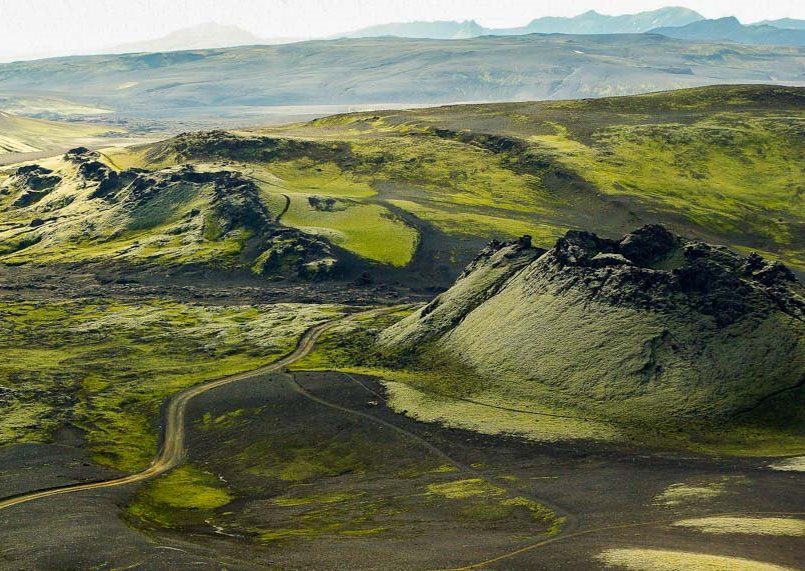
Laki Craters
Eldgjá fissure is situated between Landmannalaugar and Kirkjubæjarklaustur. Eldgjá is the largest volcanic canyon in the world at 40 km long, 270 m deep and 600 m wide at its widest.
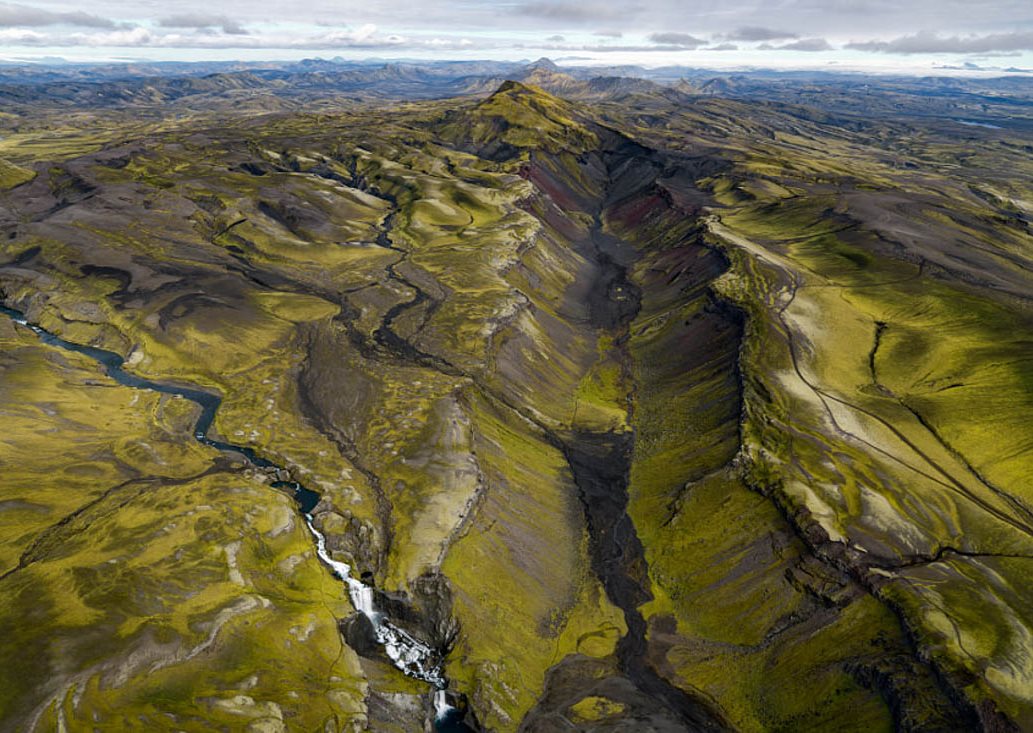
Eldgjá fissure. Photo: Ilya Grigorik
Langisjór, the ‘Long Sea’ is a long and narrow lake in the highlands, this is one of the largest lakes in Iceland.
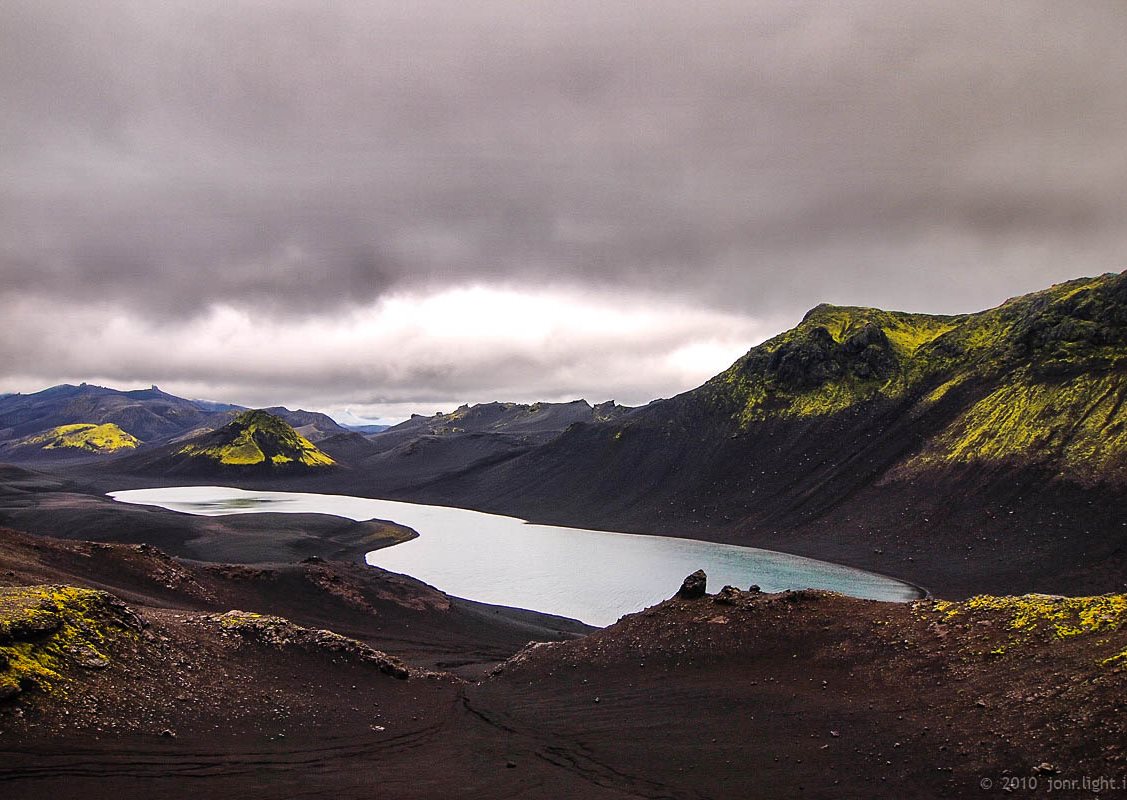
Langisjór. Photo: Jon Ragnarsson - Flickr
Fjaðrárgljúfur canyon is just a few kilometers from the village. The magnificent Fjaðrárgljúfur canyon is 100 m deep and 2 km long. With incredibly eye-catching fluvial terraces on both sides of the canyon, Fjaðrárgljúfur is one of the most popular tourist attractions in Iceland.
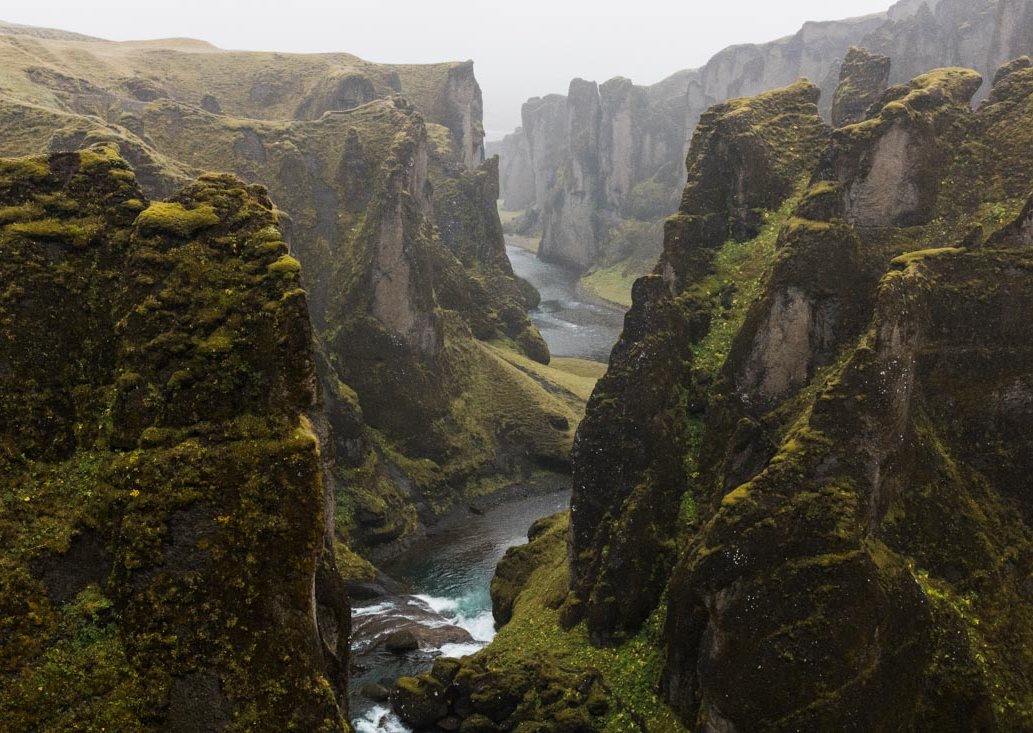
Fjaðrárgljúfur canyon
Dverghamrar, the ‘Dwarf Rocks’, these are spectacular examples of columnar basalt formations. Columnar basalt is formed when a lava flow cools down very quickly and contraction forces build up the columns. The name refers to the hidden folk allegedly residing here.
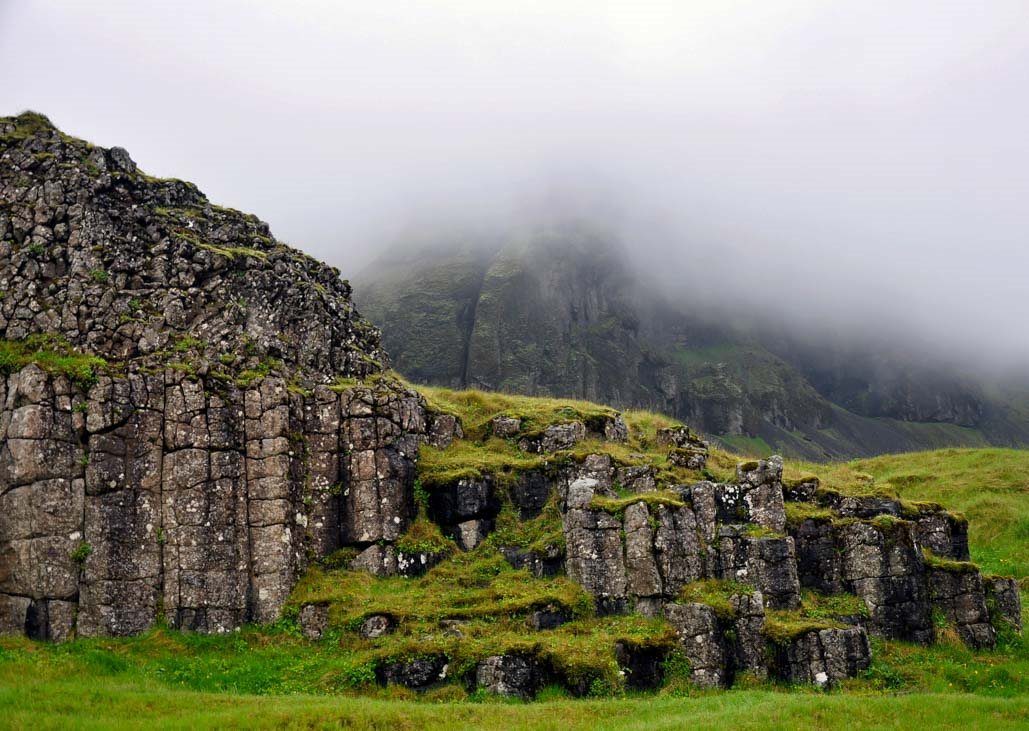
Dverghamrar. Photo: Jennifer Boyer - Flickr
Foss á Síðu, the ‘Waterfall at Síða’ is located on the opposite side of Dverghamrar. The water drops 30 m from the beautiful cliffs which are lightly covered in moss, because the stream is quite small, very strong winds can make it flow upwards.
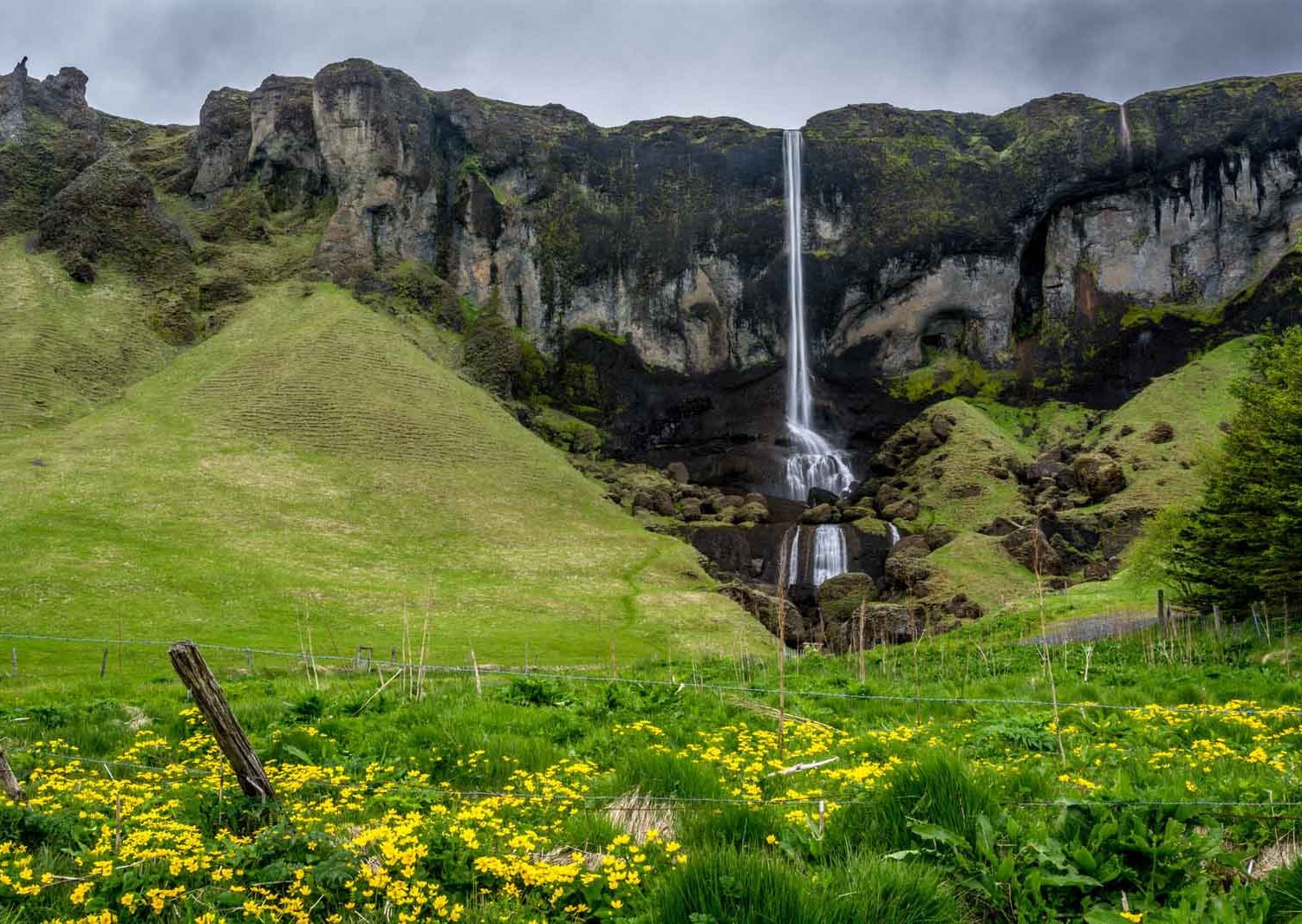
Foss á Síðu. Photo: Ron Kroetz - Flickr
Kirkjugólf, the “Church Floor” is an 80 square meter natural pavement formed from columnar basalt which, as the name suggests, looks like a paved church floor. It is only a short walk east of Kirkjubæjarlaustur. This formation has similar origins as the Giant's Causeway in Ireland.
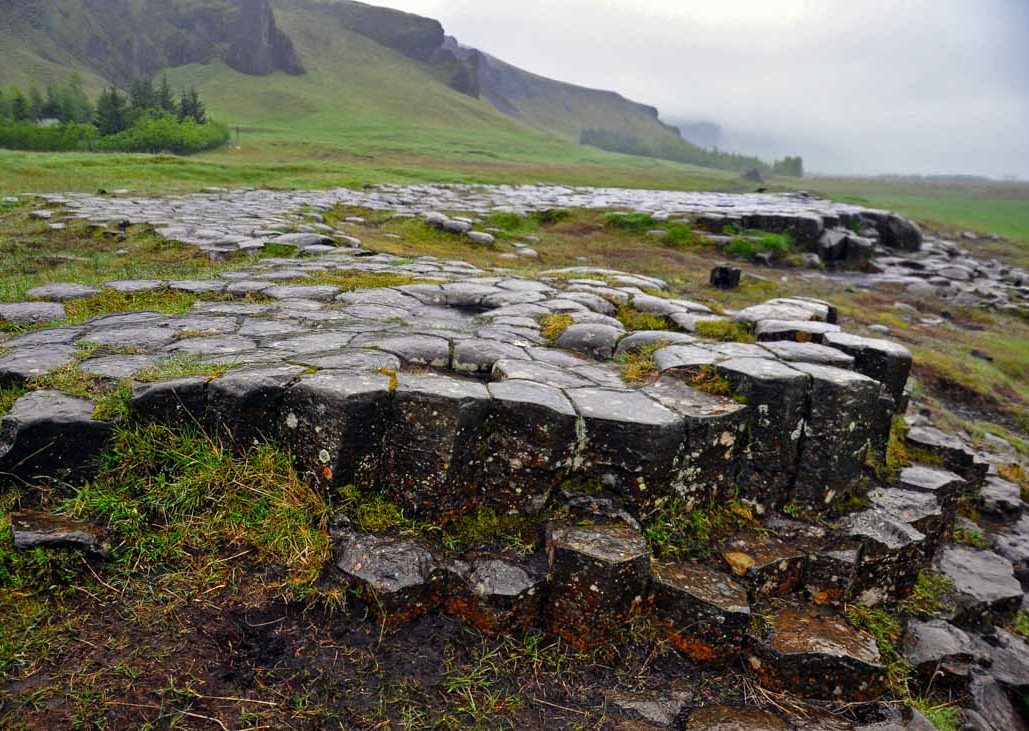
Kirkjugólf. Photo: Jennifer Boyer - Flickr
Systrafoss, the ‘Sister Falls’ overlook the village, flowing from Systravatn, the ‘Sister’s Lake’ on top of the small mountain. A climb to the top offers some great views.
Systrastapi the picturesque ‘Sister's Rock Pillar’ is only a few minutes walk to the east and Stjórnarfoss waterfall can be found a 30-minute walk to the west of the village.
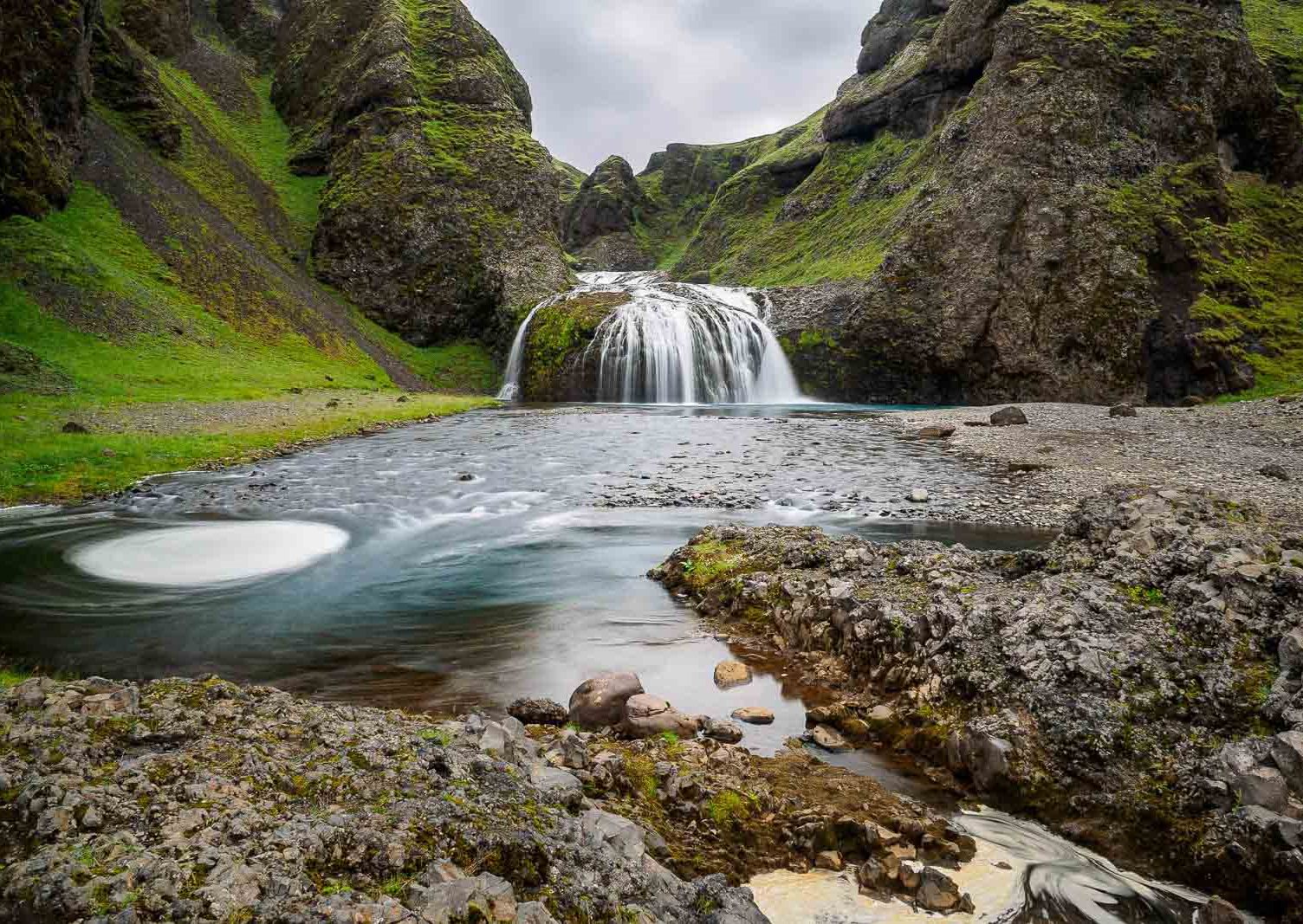
Stjórnarfoss. Photo: Gusjer - Flickr
Fagrifoss Waterfall with a height of 80 m is one of the highest waterfalls in Iceland. It can be accessed by a larger 4X4 jeep.
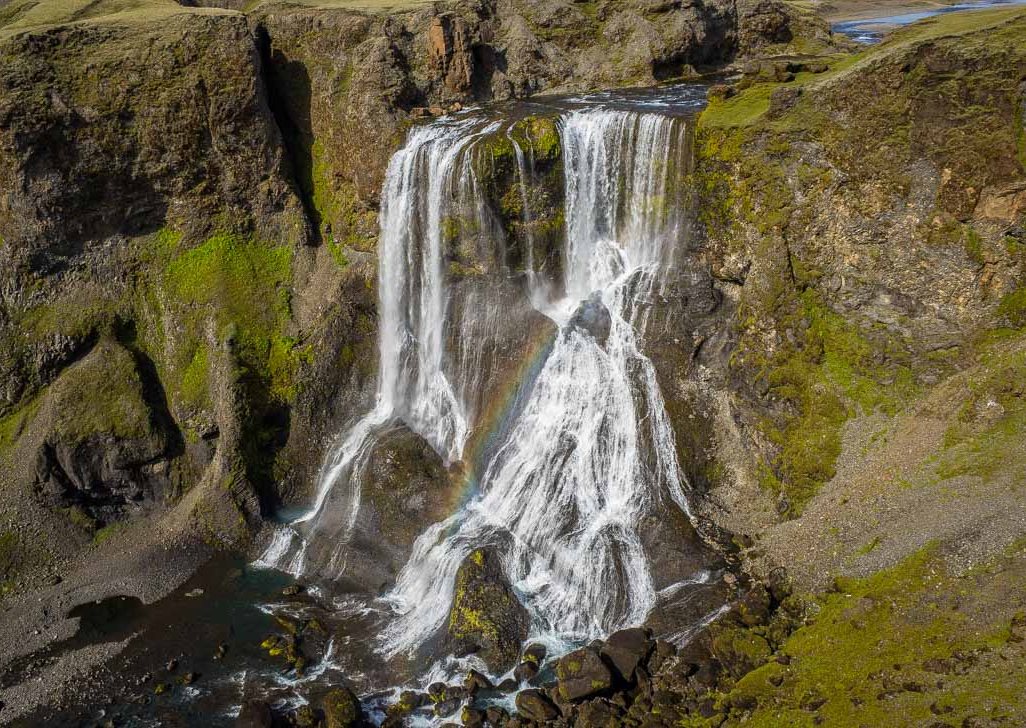
Fagrifoss. Photo: Bovitch - Flickr
Eldhraun, the ‘Fire Lava’, is a huge 565 square kilometer lava field close to Kirkjubæjarklaustur, formed during the Laki eruption in 1783-1784.
Iceland is extremely rich in different types of mosses since it is the only type of plant which can subsist in these harsh conditions. However, if it is damaged it takes centuries for it to recover, which is why leaving the signed hiking trail and stepping onto the moss is not allowed.
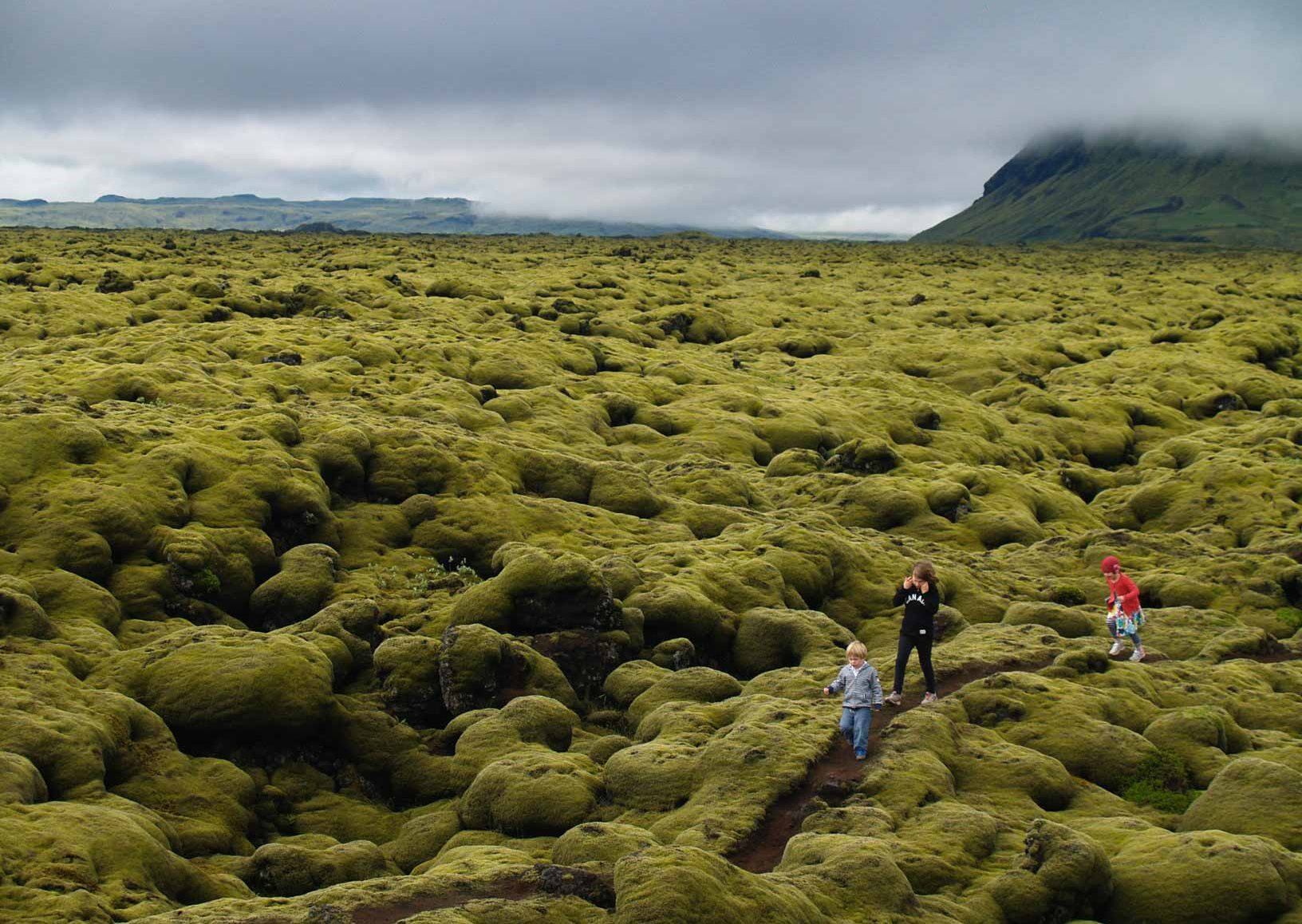
Eldhraun lava field. Photo: matt - Flickr
Visiting some of these places can be tricky in winter. The success highly depends on the type of the vehicle that you have and on the road conditions. Do not forget to check the weather, warnings and the conditions of the roads before heading out.
Dramatic history and folklore
The name of the village and the local natural attractions relate to the rich religious history of this area. Irish monks lived here before the first Norse settlers arrived, in the 12th Century a convent was built for Benedictine nuns. The cloister remained for more than four hundred years, until the Reformation came in 1550.
Burnt and drowned nuns
Plenty of colorful folktales remain from this period about both good and sinful nuns:
Systrastapi, the ‘Sister’s Rock’ has been said to be the grave of two nuns who sold their soul to the devil. They stole food from the church, made physical contact with men and spoke blasphemously about the Pope. These particular sinful nuns were burnt at the stake.
After the Reformation, so the legend goes, the first sister was vindicated and flowers started to bloom on her grave, whilst the other grave has remained barren.
Systravatn, the ‘Sister’s Lake’ where the nuns used to bathe, also has a tale linked to it. One day two nuns saw a hand with a gold ring rising up above the water. When they tried to reach it, the hand dragged them beneath the water. No one ever saw them again.
Cataclysmic volcanic events
A few centuries later, the village experienced one of the largest volcanic catastrophes in history. Laki volcano erupted in 1783, causing the death of a remarkably large segment of the human and animal populations of Iceland.
There is a fabulous legend about a local pastor, Jón Steingrímsson, who stopped the lava flow by the power of prayer and the celebration of Mass. This famous Eldmessa (Fire Mass) is said to have saved the village from impending disaster at the very last possible moment. Two centuries later, the chapel at Kirkjubæjarklaustur was built to commemorate him.
Today, despite its size, this tiny village is an important center for the farms on the south coast, as well as for foreign visitors and the local visitors who have weekend houses in the area.